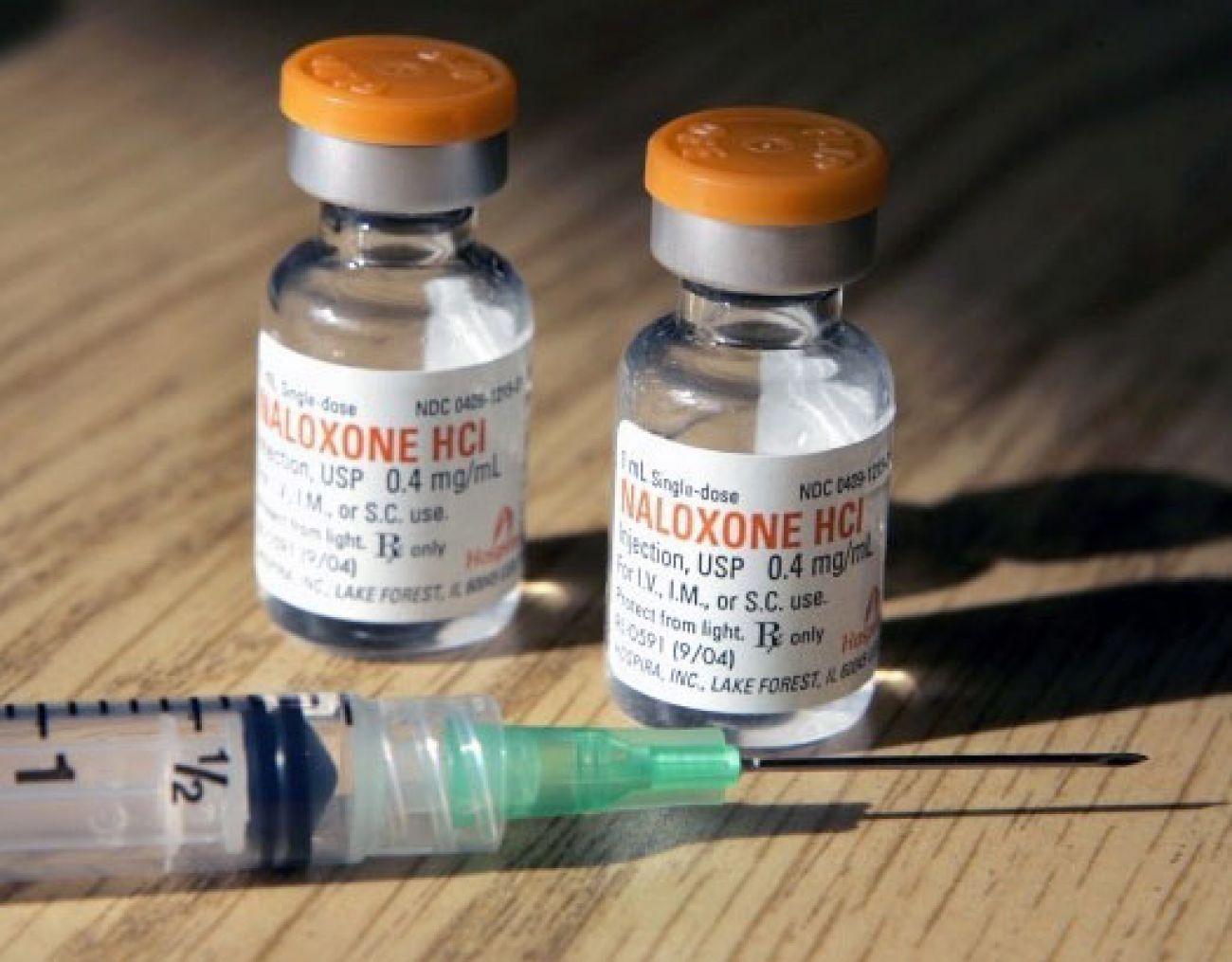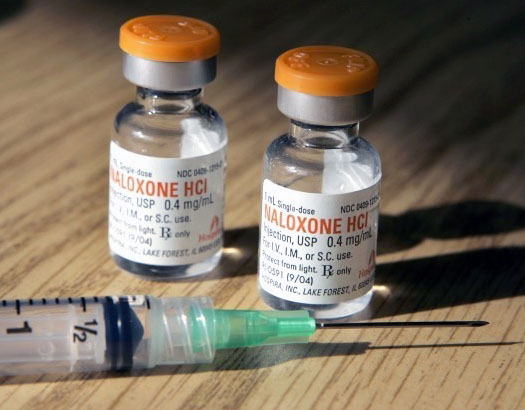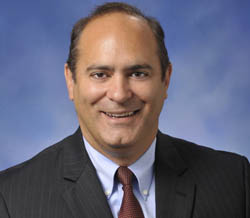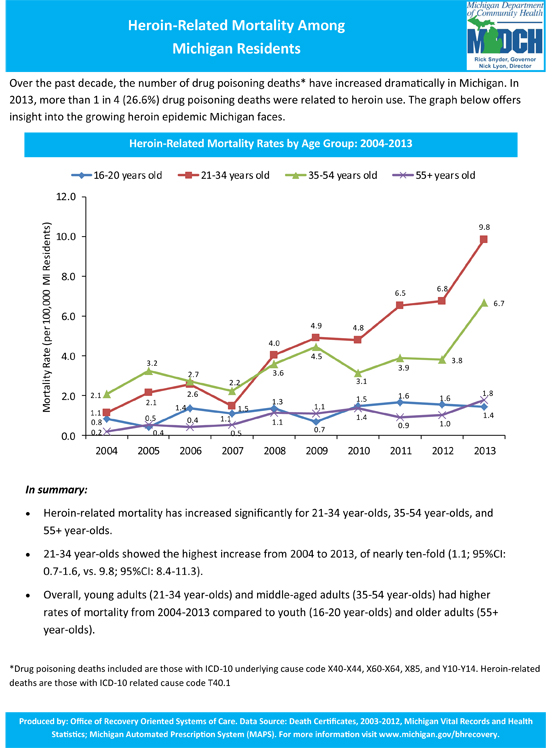In Michigan heroin epidemic, deciding whose lives are worth saving

Sgt. Daryn Santini heard a medical call come over his patrol car radio in late May and recognized the address. He knew exactly who was dying and why.
The 24-year-old who lived at the Mt. Clemens apartment had recently told Santini he was trying to kick a heroin habit. But like a majority of addicts, he had relapsed. Santini, who works for Macomb County Sheriff’s Office, arrived to see fire department and ambulance workers pressing on the young man’s thin chest and breathing air into his dying lungs.
Related: In Michigan emergency rooms, a chance missed in the opioid crisis
Related: Michigan falls short in frontline treatment for opioid crisis
Related: For opioid addicts in Michigan, online help when no doctor is near
Opinion: When doctors don’t do their homework, they enable opioid abuse
Santini told the rescue workers about the man’s addiction, and more important, that his patrol equipment came with the drug naloxone hydrochloride, an antidote to heroin and other opioid overdoses. The man’s lips had begun to turn blue from lack of oxygen. So Santini sprayed the naloxone into the man’s nostrils.
And waited.
For years, the drug known as naloxone has been available by prescription to addicts or given under emergency medical care, usually in intravenous injection form. But in recent years it has been credited with saving thousands of lives when administered by everyday people. Advocates in Michigan are pushing to make it more broadly available in the state, even if it means in some cases decriminalizing petty drug possession at overdose scenes.
About seven years ago, Santini saw a paramedic use the drug to revive an addict and thought that it was a miracle tool. Until January, Michigan law didn’t allow police access to it. And there Santini was, just days after being trained to use the drug in nasal spray form, watching to see if the man would live or die.
Two minutes after the spray went into his heroin-poisoned bloodstream, the young man opened his sobering eyes and was able to respond to questions. He was the first of six overdose sufferers saved by police in Macomb since May when Santini’s department put 114 naloxone kits in patrol cars.
“It’s an amazing thing to help save a life,” Santini said.
In just over a decade, U.S. heroin deaths have nearly quadrupled, with the spike in Michigan even grimmer. Macomb county has led the state in rate of heroin overdose deaths per capita. Yet only recently has the state begun to provide broader access to the drug that can rescue overdose victims from death cheaply, quickly and effectively.
Advocates of naloxone are urging Michigan lawmakers to pass two laws that follow the lead of other states: one, to make naloxone broadly available without a prescription, and another to essentially decriminalize petty drug possession for anyone who reports an overdose. (Often, overdose victims are left for dead rather than taken to emergency rooms by fellow users who are afraid of being arrested themselves.) New legislation in the works, if passed, would expand access to naloxone to help more drug users who overdose, but not all.
An epidemic, and a lifesaver
One out of four drug overdoses were related to heroin in Michigan in 2013, according to the Michigan Department of Community Health. Prescription painkillers account for the most common overdose deaths. But in recent months, the nation has turned its attention to the stark increase in heroin deaths in part because research shows those who abuse legal prescription painkillers move on to the illegal street drug at startling rates. Heroin and prescription painkillers such as Vicodin and Oxycontin, are chemical cousins in a family of drugs called opioids.
From 2009 to 2012, 826 people died from heroin overdoses in Michigan and 930 from prescription pain medications. Naloxone, commonly known by its commercial name, Narcan, can nearly instantly reverse overdoses related to both opioids.
The alarming number of opiate deaths led Gov. Rick Snyder to sign a package of bills that requires emergency personnel to keep the drug on hand by 2016, and allow friends and relatives of addicts to get access to naloxone with a prescription.
That was just the beginning, said Rep. Anthony Forlini (R-Harrison Township), one of the sponsors of those bills. Forlini expects to introduce another bill this fall to try to help opioid addicts. “You’re going to see more of these bills,” he said.
In August, a bill was introduced to protect people from being prosecuted for possessing a “personal use” amount of prescription drugs while being treated for an overdose or seeking help for someone suspected of overdosing. That bill came after a high school football player died at what teens call a “skittles” party where pills that were legally prescribed are shared. The bill seeks to encourage drug users and those around them to get help for an overdose rather than do nothing because they fear arrest. The “Good Samaritan” bill does not apply to heroin, however, nor does it apply to people over 21.
Naloxone has saved lives, but the legalization process is tricky. It’s not that there is a groundswell of opposition to naloxone in Michigan, but such legislation can take years to pass because it calls for moral discussions that some legislators find politically dangerous, advocates said. In Maine, for instance, where heroin deaths quadrupled between 2011 and 2012, the state’s governor, Paul LePage, balked at expanding availability of naloxone on the theory that it offered a safety net to addicts that would encourage them to continue using. He subsequently agreed to support its limited availability to some family members, but only with a prescription.
Advocates say that argument creates a double standard that punishes addicts.
 Judge Linda Davis, president of Families Against Narcotics, said there’s no downside to making the overdose antidote available over the counter.
Judge Linda Davis, president of Families Against Narcotics, said there’s no downside to making the overdose antidote available over the counter.
“We would never treat someone with a serious disease the way we treat people in (drug) recovery,” said Linda Davis, a district court judge in Clinton Township in Macomb County, and president of Families Against Narcotics. She favors broad public access to the drug. “There is a mental block when it comes to drug addiction. People look at it as a choice. We really need to educate the community as to how serious (addiction) is as a disease.”
The trend that shows overdose deaths skyrocketing also indicates that more people will die and fewer will be saved if Michigan delays expanding naloxone-access laws.
“We have to educate (legislators),” said Forlini. “They have to feel like they’re not encouraging drug use.”
More sobering highs
In Michigan, total overdose deaths have quadrupled since 1999, mostly spurred by the increase in prescription pain medicine abuse, according to the state’s 2014 report, “A Profile of Drug Overdose Deaths Using the Michigan Automated Prescription System (MAPS).”
The increase in prescription painkiller abuse – namely opiates such as Oxycontin and Vicodin – accounts for the largest increase in drug use and deaths. In Michigan in 2012, 9.1 million prescriptions were written for pain killers, MAPS data show.
Often, when those drugs no longer provide the desired balm, users turn to the heroin.
Among Michigan’s 1,138 drug overdose deaths in 2012, 80 percent of those who died had at least one or more controlled substance prescriptions filled within the year prior to death – half of those prescriptions were for painkillers, state records show.
Once on heroin, an addict is six to 20 times more likely to die than someone in the general population, according to the National Institutes of Health.
The U.S. Centers for Disease Control suggests, among other solutions, that states widely expand access to naloxone to reduce overdose deaths. From 1996 through June 2014, community and health organizations nationwide that provided naloxone kits to the public received reports of 26,463 overdose reversals, according to the CDC.
Helping or enabling?
As heroin use has spread, white males between 18 and 44 have by far accounted for the largest demographic group of overdose deaths over the past 13 years, but there has also been explosive growth among women. Heroin users are dying everywhere from trap houses to trailer parks, from rural outposts to bucolic college campuses.
Over the past decade or so, Michigan has paid a good deal of attention to treating opioid addiction, most notably through a drug called buprenorphine. Consider: In 2003, 327 prescriptions were written in Michigan for buprenorphine. By 2012, that number had risen to 392,544 prescriptions, a staggering 1,200-fold increase, MAPS records show.
But, as health advocates note, in order to get treatment the addict must be alive, not dead of an overdose.
Across the nation, 40 states and the District of Columbia have naloxone access laws while 31 states and D.C have Good Samaritan laws, according to the Network for Public Health Law based in St. Paul, Minnesota.
A few months before Michigan passed a law last year to allow police, family and friends to get access to naloxone by prescription, Ohio passed a similar law. Ohio then took it a step further this July, making naloxone available without a prescription.
Typically, people get a naloxone prescription as a precautionary measure if they know someone who is in treatment or at risk of an overdose, said Judi Moseley, program consultant for Violence and Injury Prevention Programs in the Ohio Department of Health.
Ohio runs Project Deaths Avoided With Naloxone (DAWN) in 30 community-based programs such as local health departments and treatment centers. From 2012 to April 2015, Project DAWN distributed 3,439 naloxone kits and recorded 232 overdose reversals or lives saved, Moseley said.
Joan Papp, an advocate for the passage of the Ohio legalization, notes that the drug halts the effects of an opioid drug and sobers up a person who is overdosing, but it cannot be used to get high so it is essentially immune from abuse.
And it’s fairly cheap. A single dose costs about $33, said Papp, assistant professor of emergency medicine at MetroHealth Medical Center in Cleveland and medical director for Project DAWN of Cuyahoga County in Cleveland.
Ohio and Michigan are following the typical process towards naloxone legalization, Papp said. First advocates go for the family-and-friends laws that allow acquaintances to get a prescription to buy the drug, followed by a law to make it available without a prescription. Only then do they push for the big win – a Good Samaritan law to encourage friends to get treatment for overdose victims.
There is no guarantee that steps two and three will get widespread support in Michigan.
Andrea Bitely, spokeswoman for Michigan Attorney General Bill Schuette, who is on the governor’s taskforce on opioids, stopped short of saying Schuette supported further expanding access to naloxone or instituting a Good Samaritan law. "The AG and other members of the Opioid Taskforce are weighing many options for the treatment and reduction of opioid related deaths and illnesses," she said in an email.
Saving a friend
Myles Dawson, 27, knows what it’s like to dumped for dead by a fellow heroin addict. About five years ago, he was overdosing and a friend pushed him out of a moving car and onto the concrete in front of the hospital in Columbus, Ohio.
A nurse who was getting off work happened to find him, he said.
“If there was some type of (Good Samaritan) law in place, he probably would’ve stopped the car, ran in and got somebody and stayed with me,” said Dawson, who suffered road rash – a series of nasty scrapes that resulted from his limp body rolling on the concrete.
“There’s a good chance that if that lady wasn’t walking by I wouldn’t have made it.”
Not everyone is so lucky.
Rep. Al. Pscholka (R-Lincoln Township) sponsored the Good Samaritan bill this summer and Forlini signed on as a co-sponsor. Pscholka said he introduced the bill after 16-year-old Mason Mizwicki of Watervliet in southwestern Michigan died from an overdose of methadone. The football player’s body was discovered on New Year's Day. Other teens reportedly were with him, getting high on a rainbow of prescription drugs at the “skittles” party on the night Mizwicki overdosed. None of the teens called for help.
But Pscholka’s bill is limited to emergencies involving prescription drugs (not heroin) and would only protect youth under the age of 21.
"We really wanted to protect minors and young people more so than adults who should kind of know better," he said.
Pscholka said he expects some critics will say his bill is soft on drugs and encourages drug use, while others will want the bill to be expanded to include cocaine, heroin and methamphetamines.
"I see prescription drugs as a common sense first step,” he said. “We do need to have more conversations. We're having some now having to do with heroin because it is becoming extremely popular."
Health advocates are among those who say Pscholka’s bill is too limited.
Judge Davis, the president of Families Against Narcotics, said she wants naloxone available over the counter, and for the Good Samaritan law to extend to all ages as well as to heroin in addition to prescription narcotics.
“There are kinks to work out with police but most police I know are as tired of seeing young people die as we are,” Davis said.
Back from the dead
First, there’s the warm tingle of euphoria. The comforting feeling that everything is going to be all right. Sleep takes over. Within minutes breathing slows. To a near stop.
That’s what a heroin overdose feels like.
A naloxone dose is the hellish opposite.
Picture the scene in “Pulp Fiction” where John Travolta revives Uma Thurman from an overdose. Subtract Travolta dramatically plunging a needle into her chest and Thurman’s even more dramatic gasping.
Naloxone can be administered using a nasal spray, syringe or autoinjector. Its impact is almost instantaneous. The drug yanks the overdose victim from the sleepy path toward death into immediate wakefulness. But then a sort of withdrawal sickness starts. A fierce headache, vomiting and a racing mind compound it.
Naloxone wears off in about 30 minutes, and may require an additional dose, and another round of sickness.
It’s a life-saving, horrible experience, said Dawson, the recovering addict from Ohio. He was resurrected twice with naloxone. He testified to the Ohio Legislature that the availability of naloxone did not encourage his drug use; but it did save his life.
“I was never using with the intent to keep a naloxone shot around so I can get really,” high, Dawson said.
Today, Dawson said he has been clean five years and is on the golf team at Columbus State Community College where he’s studying business and hopes to take over and expand his father’s pizza restaurants one day.
Naloxone should be as easy to get as Advil, he said. It hurts no one and saves thousands at a time when more people are dying.
“How many addicts are waiting to be saved by a naloxone shot and go on to…use all that will power and brain power for something good?
“To me, it’s common sense.”
See what new members are saying about why they donated to Bridge Michigan:
- “In order for this information to be accurate and unbiased it must be underwritten by its readers, not by special interests.” - Larry S.
- “Not many other media sources report on the topics Bridge does.” - Susan B.
- “Your journalism is outstanding and rare these days.” - Mark S.
If you want to ensure the future of nonpartisan, nonprofit Michigan journalism, please become a member today. You, too, will be asked why you donated and maybe we'll feature your quote next time!


 Naloxone can quickly reverse the death spiral of people who overdose on heroin and other common opioids. Some Michigan lawmakers are trying to make the antidote more broadly available in emergencies.
Naloxone can quickly reverse the death spiral of people who overdose on heroin and other common opioids. Some Michigan lawmakers are trying to make the antidote more broadly available in emergencies. Rep. Anthony Forlini (R-Harrison Township) sponsored a bill last year that makes an overdose antidote available to friends and relatives of addicts with a prescription in case of emergency.
Rep. Anthony Forlini (R-Harrison Township) sponsored a bill last year that makes an overdose antidote available to friends and relatives of addicts with a prescription in case of emergency. click to enlarge
click to enlarge